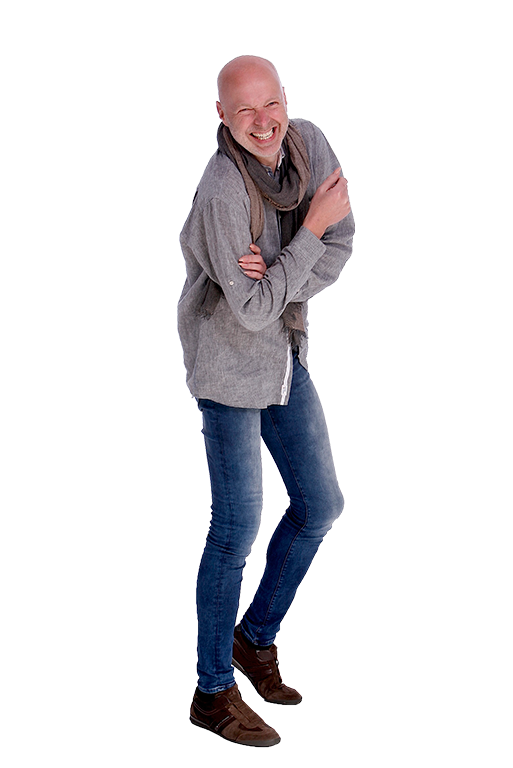Gabriel Delponte was born in Buenos Aires, Argentina, and has traveled extensively, which has influenced his work.
A self-taught visual artist, he has exhibited prolifically nationally and internationally.
His most important exhibitions have been the "Chorus" installation for the Rockefeller Center, New York, 2006; the "Non-Title" piece for the Paik Hae Young Gallery, Seoul-Korea, 2006; the "Mas Agujeros que Coherencia" for Cámara de Comercio in Bogotá, Colombia, 2008; the "Avatar" mural for the Cultural Plaza Defensa in Buenos Aires, Argentina, 2009; the "Perla Labuan" for El Viejo San Juan, Puerto Rico, 2009; the "Zone Painting" for the Columbia Museum of Art, Columbia, South Carolina, 2017.
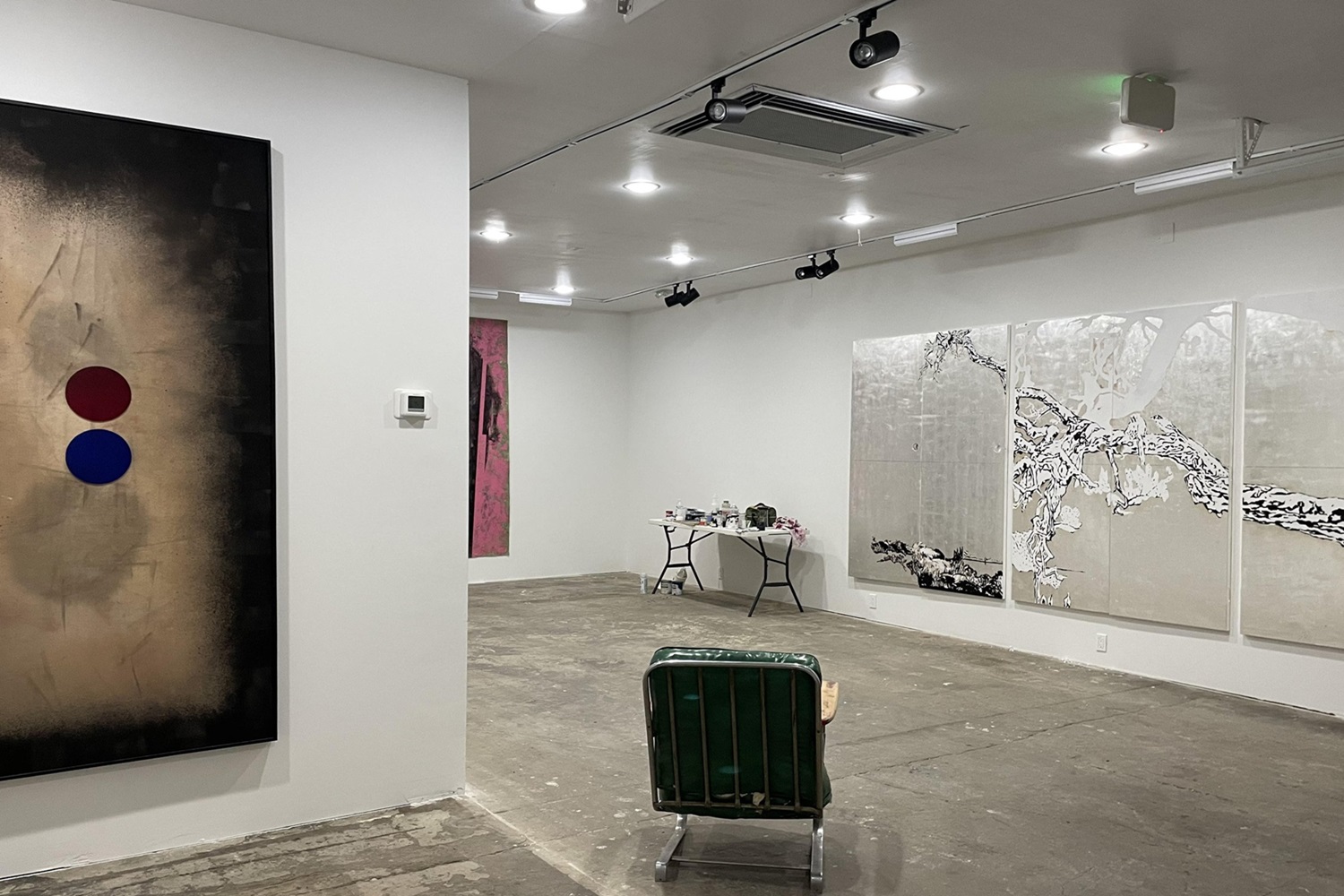
Gabriel Delponte "Boy Hood" (2024) Repurposed doors, silver leaves, charcoal cloth, at left, "Pipeline" (2024), mixed media. (Photo courtesy of the artist)
In 2014, he moved his studies and workshop to Japan to conduct an art project, which led him to work there for six years and host the "Bridge Me Japan" project. In 2018, he exhibited the "Scholar for the City of Fujisawa Art Space, Japan.
Since 2019, Gabriel Delponte has been developing new works in Miami Beach and Tulsa, Oklahoma.
miamiartzine.com spoke to Delponte about his travels, his works and what he is creating in his studio now.
miamiartzine.com: You’ve had a fascinating journey, from your roots in Argentina to Central America, all the years you've lived in Japan, Miami Beach and a move to Tulsa, Oklahoma.
Gabriel Delponte: Well, it's a bit of a winding road. I visited Japan for about a year, but in 2013, I began working on a project that took me there for another 6 years. I returned to the United States in March 2020, on the last flight from Vienna to Miami, right before COVID was declared a global pandemic. I landed in Miami and all the airports worldwide were shut down. The following 4 years after that, I worked from Miami. Luckily, I have commission work to get done, including a design piece, which was very interesting to work on.
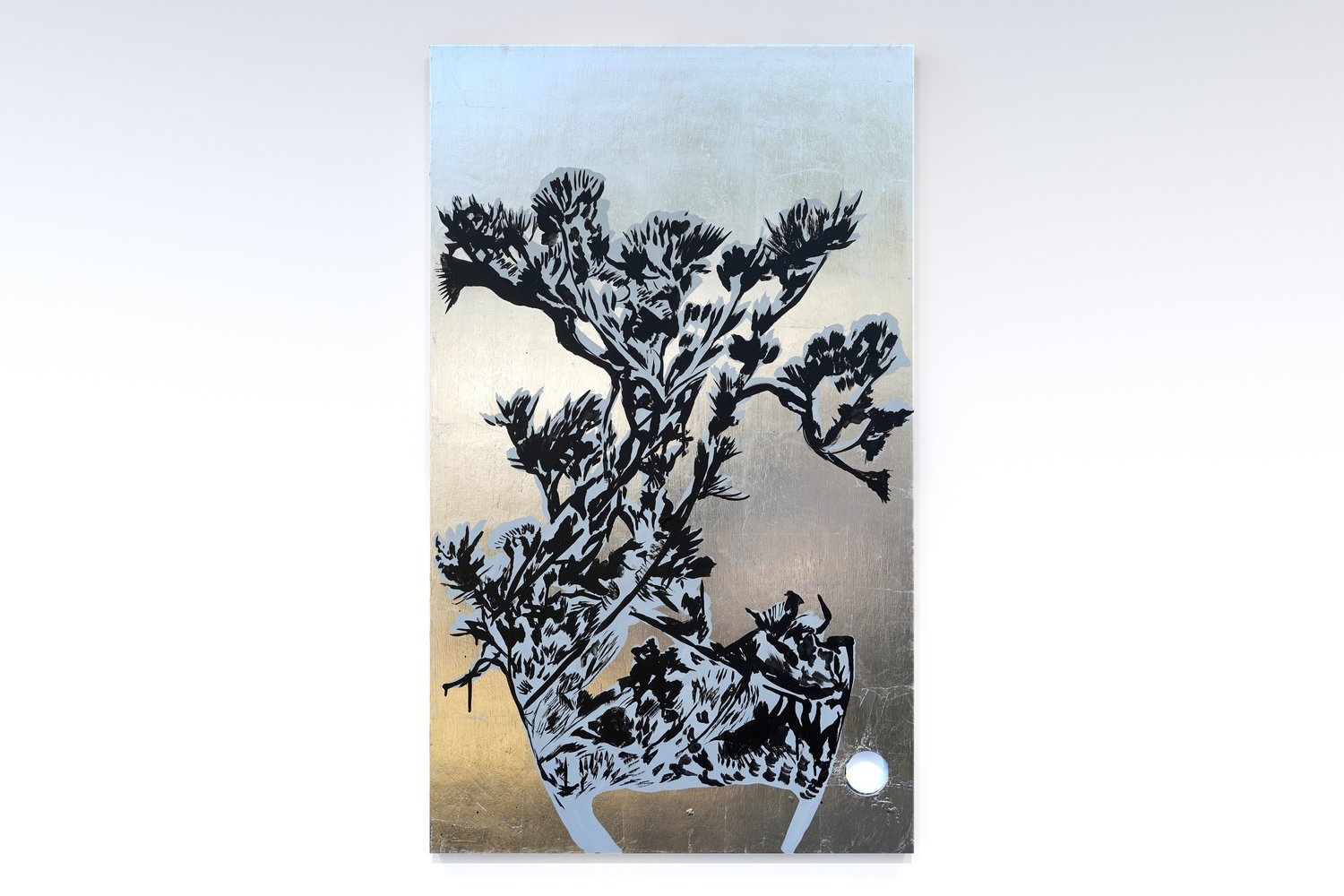
"Pot of Prairie," 2024, mix media and silver leaf on wooden door. (Photo courtesy of the artist)
MAZ: Your work often draws inspiration from diverse cultural contexts. You've talked about the historical and societal perspectives that, as you say, allow you to explore themes of the collective present. Can you talk about that more in detail?
GD: One example was when I worked with the local community in Costa Rica on a 13-meter (42-foot) painting that evolved from a single concept into a piece inspired by the neighborhood's unique narratives, and the piece received the location name for a title. I have had similar experiences in Argentina, Colombia, Puerto Rico, Mexico, South Korea, Europe, and Japan. Immersing myself in diverse cultures has allowed me to develop a unique perspective and insights that fuel my creativity.
MAZ: In your last exhibition, you drew inspiration from social and environmental debates. Can you elaborate on how you see these themes connecting across time?
GD: In the early 20th century, landowners faced off against oil magnates, a conflict rooted in the struggle for economic opportunity versus environmental stewardship and repossession of the land. This created displacement and conflict, or migration. In some aspects, our time is not too different, and that displacement interest could be related to my childhood, so perhaps this could be one or two reasons for my inspiration, which maybe tomorrow is poetry. My work evokes this historical context, reminding viewers that these discussions are not new; they echo a rich tapestry of American struggle and resilience. This is an interesting topic for me.
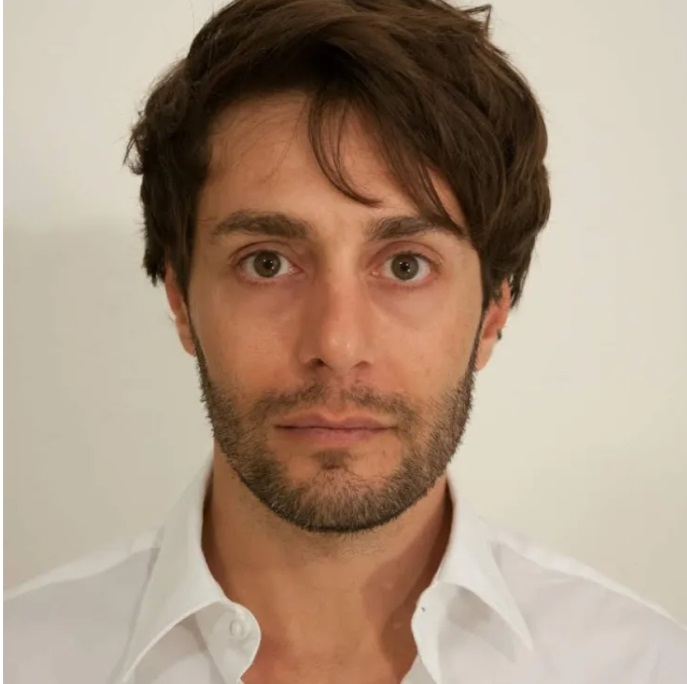
The artist: Gabriel Delponte
MAZ: It’s intriguing to think about how these historical narratives reverberate through time. How do your illustrations serve as a dialogue with both the past and the present?
GD: There is no need to dialogue with the past. Each painting and illustration acts as a symbolic bridge between the historical and the contemporary, drawing inspiration from 20th-century literature that resonates with today’s interests. The topics depicted in my works are those between man, industry, land, and societal debates. Each idea creates a single symbolic gesture and image. In fact, the same themes are coming alive in the current series of paintings I am working on as these keep evolving.
MAZ: Do you have a certain way in which you create your work?
GD: For a recent exhibition “Pipeline,” the work was physical. I paint on the floor fast and energetically. I envision them as flags or marks left from periods of conflict, almost like something you’d find on the floor the day after a protest—symbols of history and time. The work is chaotic but with a good amount of geometry and control. These are symbols of advertisement. These create a dialogue between aspiration and disillusionment in some dreamland. And for a new series, it is precise and detailed. Imagine a large or magnified ink drawing from old books over silver leaf. They have more of a hunting and gloomy feeling.
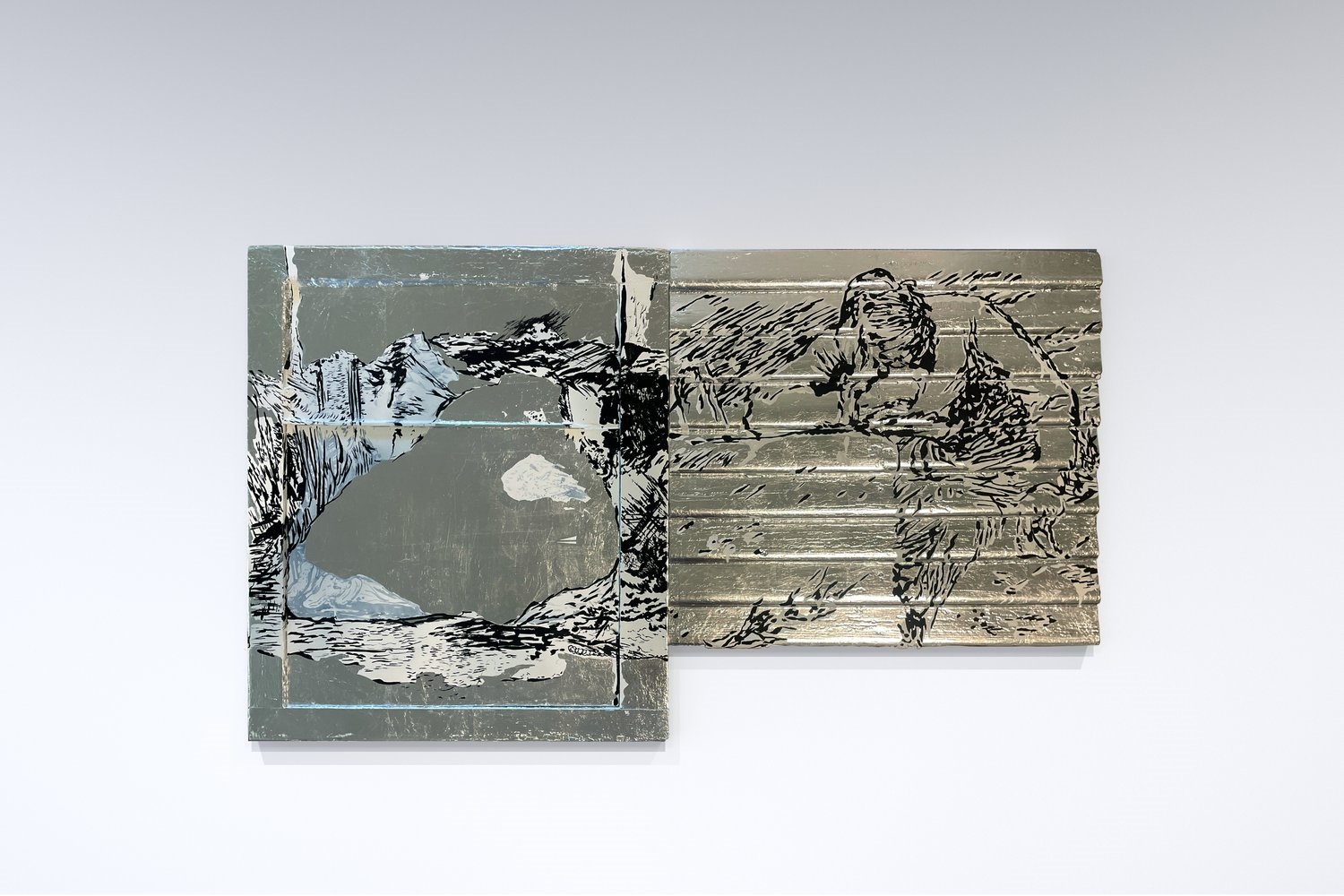
Gabriel Delponte, "Melancholic Figure," 2024, mix media, silver leaf on wooden door and glass. (Photo courtesy of the artist)
MAZ: Your travels to Asia, particularly Japan, have undoubtedly shaped your artistic vision. How has your time in Japan and different cultural contexts influenced your creative perspective? Earlier, you spoke about duality. Was it in Japan that you learned about balance and the interplay between tradition and innovation? What particular insights or techniques did you gain? How have you incorporated these elements into your own artistic practice?
GD: If I use an example, painters such Monet, Gaugin, Degas, and many others who were habit collectors of Japanese wood prints called Ukiyo-e. Like many other artists up to these days, they were highly influenced by these wood prints and their aesthetics.
I traveled the country extensively, more than locals could, and it definitely has influenced me in many aspects. Also, I am fond of traditional pottery from the JÅmon period, but it was not all art. Imagine what it does to live in a place for seven years. It was a happy time in my life, and it is constantly coming out in my work, one way or another.
MAZ: Can you elaborate on your artistic process? How do you transition from initial inspiration to the final artwork, and what role does your experimentation play in your practice?
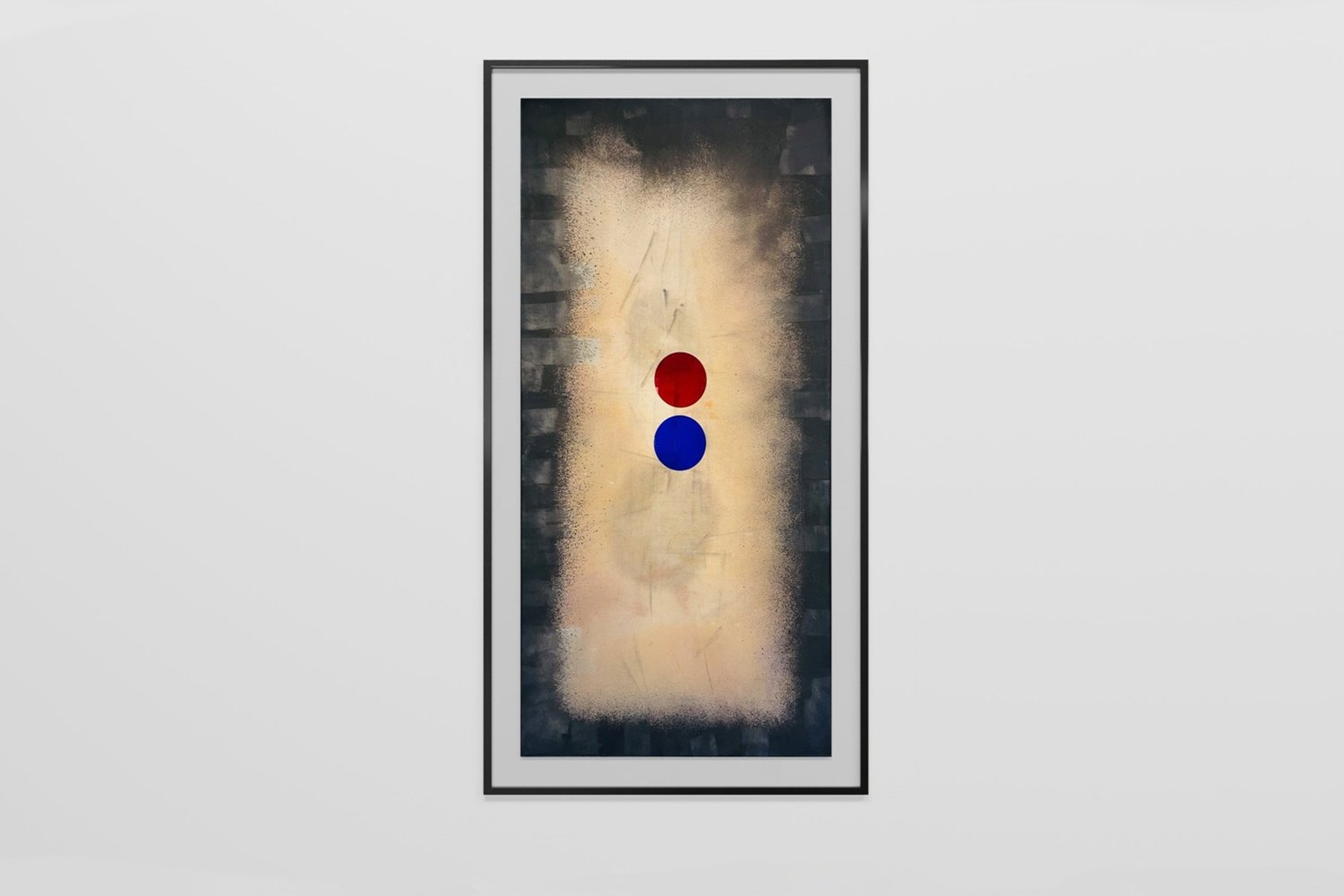
Gabriel Delponte, "Pipeline," 2024, mixed media.
GD: Drawing and reading are a big part of it. I listen to audiobooks, talk to locals, and make sketches to connect the dots and look for patterns and paradoxes that inform my work. From here, I experiment with how best to bring these ideas to life. The journey is a dynamic conversation between concept and execution. The ongoing exploration makes the artwork evolve naturally.
MAZ: How do you think your work resonates with audiences?
GD: Many people are grappling with issues of identity, economic change, and community resilience. I like to think that my work can spark conversations around these themes. I like to hear the viewer imagine a narrative and see themselves reflected in the work, like I do myself. But it is personal in the end. Their interpretations are just as valuable as my intentions. Art is a bridge for dialogue, allowing personal stories to emerge.
MAZ: As we look to the future, are you working on your next series of work?
GD: My next work will be a series of small paintings. Each piece is filled with drawings like tectonic layers. This time, the human body is more prominent, and I seek to address notions of expectations that come with moments of change. This work is closely related to “Boy. Hood,” and the visual vocabulary that started there. The new paintings are done over salvaged 1900s house elements that I covered with silver leaves before applying the image. This adds a glimmering, silken foundation. It’s almost like seeing silhouettes and shadows by candlelight. The entire process becomes ritualistic and symbolic for me.
Find out more about the artist at his website, gabrieldelponte.com/
 MAIN MENU
MAIN MENU

